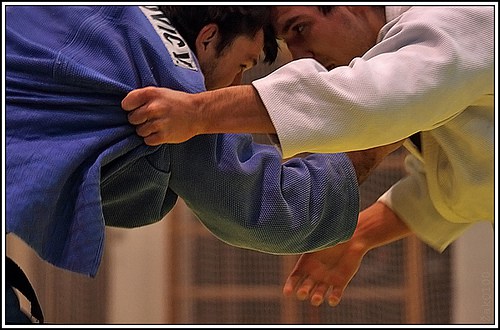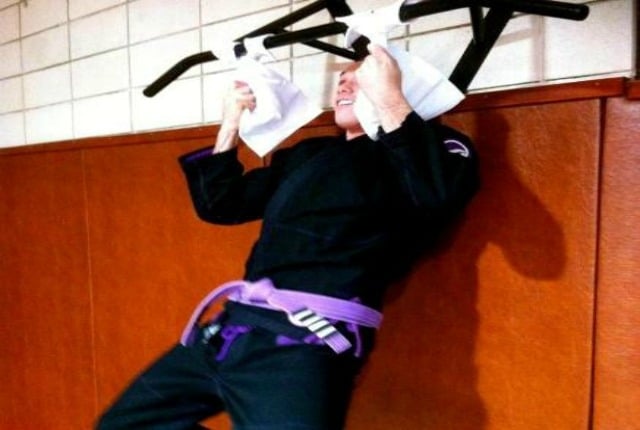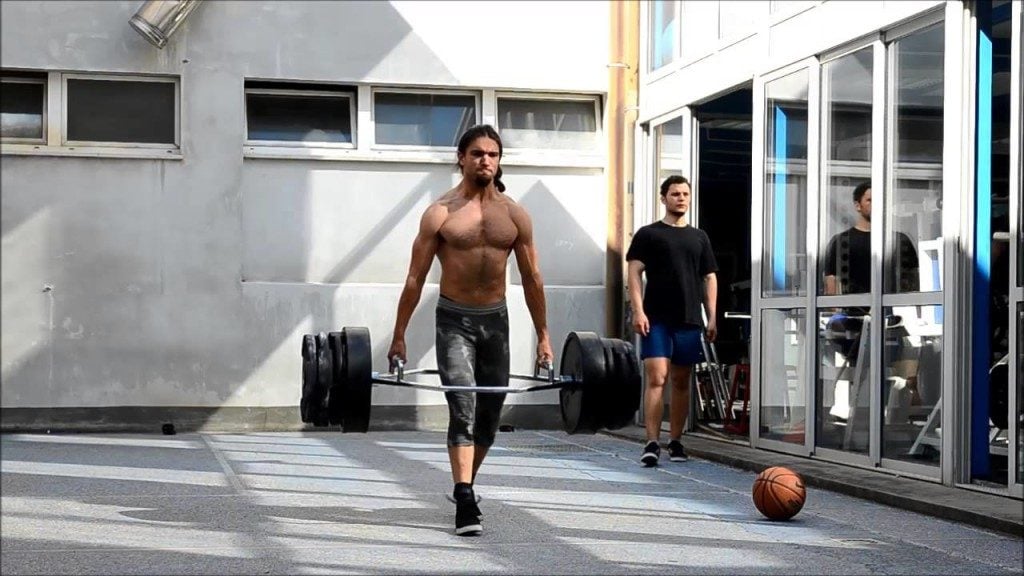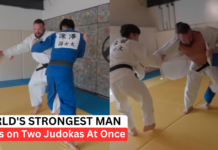
If you have ever trained grappling you are aware of how unusually much your arms ache after training. Whether it is Gi or No-Gi training, your arms, more specifically forearms are going to be on fire. If you’re new to BJJ or in your first tournament, you might even feel helpless when it comes to tying your belt back on. Jiu-Jitsu world our grips so much that it develops a certain level of grip strength on its own. But is this enough to get you through tough rolls high paced matches?
Grip strength matters a lot in BJJ. If you do not control your opponent, you won’t be able to do much to beat them. In terms of control, grips play a key role in manipulating your opponent. They provide levers, help build frames, can be used to construct wedges, or to finish submissions. Whether you’re gripping the Gi, the belt or just rashguard-covered anchor points, you need to be able to hold on. Grip strength needs to be addressed off the mats as well as on them, Given how crucial it is to grappling martial arts, it should be a huge part of any serious strength and conditioning plan.
Doing Gymnastics training will do wonders for both your grips and your BJJ in general. Learn how to incorporate it: https://bjj-world.com/use-gymnastics-to-become-strong/
The Role Of Grip Strength
A good level of grip strength opens up lots of opportunities for grappling athletes. Firm grips offer both the comfort of safety and an increased threat to your opponent. Strong grips can keep even the most technical opponent at bay, especially in a Gi environment. They can also make or break a submission, whether you’re the one doing it or escaping from it. Good grips are crucial for a solid stand-up game as well because you could hardly throw somebody unless you have a good grip on them. All in all, the stronger the grips, the easier the techniques.
Strong grips allow the body to move more efficiently, Weak grips, on the other hand, mean that the rest of your body is also going to be weaker. You might be able to bench, squat or deadlift enormous weights, but you’re only as strong as your grips. When grappling, if your grips give out your body is soon going to follow suit. Add to that an opponent with Popeye-sized forearms and you’re in for one tough match.
It is clear that grip strength is a priority for any self-respecting grappler out there. Remember that grips do not work in just one singular fashion. They have different complex mechanisms that make them strong or weak. It is precisely these anatomical features that need to be correctly trained in order to maximize grip strength for BJJ.
Pinching Grip Strength
An often overlooked aspect of gripping is so-called pinch strength. It is the strength of the connection between your thumb and one or more of your other fingers. More precisely, it is the strength of the connections at the tips of the fingers. We start off with this particular category of grip strength because it is the most difficult for athletes to master.
In Gi Jiu-Jitsu, pinch grips get a whole different meaning when it comes to controlling an opponent. Very often, in the heat of battle, proper deep grips are very difficult to establish. In cases like this, half-grips or variations are often the only available option. That’s where pinching grip strength comes in. Being able to hold on to a sleeve or pant leg just with the tip of your finger may be the deciding factor of a match. Holding on is going to allow you to either re-grip properly, or enough time to transition into a dominant position or out of danger. Talk about a last resort safety net!
Developing pinching grip strength is no easy feat. Training modalities that focus on this specific area of grip strength involve using the grip on appropriately thick materials and holding for time. In bodyweight terms, a towel or a Gi thrown over a pull-up bar is enough. Try to support your own weight with a pinch grip and you’ll be surprised at how weak you actually are. Weight plates (usually a couple of them at least) and wooden blocks can also be used for pinching.
The smart approach is a progressive loading one. If you can not do it for time, going for reps is your best option. Just make sure that your final goal is hanging as long as you can from a mechanically disadvantageous position.
Isometric Grip Strength
Isometric grip strength is probably the most important one for BJJ. The term isometric means that you’re holding a certain position without moving for a certain amount of time. In our case, this would be holding a Jiu-Jitsuspecific grip pattern in order to strengthen it.
Imagine you have your hand closed around a certain object. How long can you hold if there’s no resistance? Now imagine that there’s resistance coming from the object. It’s getting more difficult to hold on, isn’t it? Finally, imagine that you’re hanging from an object that trying to resist your hold at the same time. Now, you’re in a BJJ-specific scenario. This is something that happens to anyone in every roll, often on multiple occasions.
Grapplers are constantly in close-quarter situations and have to clinch in order to apply techniques and advance through positions. Being able to hold on while you’re maneuvering is essential for a good transitional game. A strong isometric grip means that you can pin a part of your opponent that would be instrumental in preventing you from executing something.
Training isometric grip strength requires spending time under tension. It means that your muscles need to get used to the stress of staying contracted without rest, for as long as possible. Farmer carries are an awesome way of developing iron-clad grips for grappling. You can go for distance or time, just make sure the weight you’re using is challenging. the timed deadlift is going to give all those meathead-oriented grapplers what they’re looking for. Ganging from a thick pull-up bar is the way to go for bodyweight training enthusiasts.
make sure you keep your fingers safe while training BJJ grips with these taping methods: https://bjj-world.com/best-bjj-finger-tape/
Crushing Grip Strength
Last but not least, being able to crush is a major advantage for any Jiu-Jitsu athlete. This aspect of grip strength is actually quite simple. You grab on to something. Then, you squeeze that something. Hard. It’s all there is to it. Imagine squeezing a beer can. You’re putting your fist around it and squeezing as hard as possible. The force of your action is going to crush the can inwards.
Crushing strength is the golden standard against which grip strength is measured. Dynamometers are used to measure one’s crushing strength in PSIs. In BJJ terms, crushing strength is essential to removing the grips an opponent has on you. Grip fighting is a dynamic battle of grips where crushing strength plays a major role. Whoever strips off the opponent’s grips and establishes tight isometric grips of their own is going to have the upper hand.
To train the crushing power of your grips, you can go the modern way or the ancient way. Do you know those grippers that bodybuilders swore upon in the 90s? Well, they’re exactly what you want to develop crushing power. In a more ancient manner, sticking your arms into a bucket of rice is going to do the trick. The idea is to get the muscles of your entire arm to work in coordination. To do so, you have to go for reps, the higher the better.
The Best Strength & Conditioning DVD and Digital Instructionals


![Darce Choke Encyclopedia – Origins, Mechanics and Variations [2025] BJJ, choke, Brabo, BJJ Darce Choke, D'arce Choke, Darce BJJ Choke](https://bjj-world.com/wp-content/uploads/2017/11/JungPoirierLeeYahoo-218x150.jpg)













![Slicin’ Calves Mikey Musumeci DVD Review [2025] Slicin' Calves Mikey Musumeci DVD Review](https://bjj-world.com/wp-content/uploads/2025/04/slicin-calves-mikey-musumeci-dvd-review-218x150.png)
![Jiu-Jitsu For Old Guys Guard Retention Bernardo Faria DVD Review [2025] Jiu-Jitsu For Old Guys Guard Retention Bernardo Faria DVD Review](https://bjj-world.com/wp-content/uploads/2025/03/old-guys-guard-retention-bernardo-faria-dvd-review-218x150.png)
![X-Guard Trickery Kyle Sleeman DVD Review [2025] X-Guard Trickery Kyle Sleeman DVD Review](https://bjj-world.com/wp-content/uploads/2025/03/x-guard-trickery-kyle-sleeman-dvd-review-218x150.png)
![Countering with Crab Ride Anthony Budion DVD Review [2025] Countering with Crab Ride Anthony Budion DVD Review](https://bjj-world.com/wp-content/uploads/2025/03/countering-with-crab-ride-anthony-budion-dvd-review-218x150.png)
![The Buchecha Gi Takedown System DVD Review [2025] The Buchecha Gi Takedown System DVD Review](https://bjj-world.com/wp-content/uploads/2025/01/buchecha-gi-takedown-system-dvd-review-324x235.png)

![Dima Murovanni Kill The Collar Tie BJJ Trendsetters DVD Review [2024] Dima Murovanni Kill The Collar Tie BJJ Trendsetters DVD Review](https://bjj-world.com/wp-content/uploads/2024/09/dima-murovanni-kill-the-collar-tie-dvd-review-100x70.png)





![Charles Allan Price Building Workouts For BJJ DVD Review [2024] Charles Allan Price Building Workouts For BJJ DVD Review](https://bjj-world.com/wp-content/uploads/2024/09/charles-allan-price-building-workouts-for-bjj-review-100x70.png)
![Jeff Glover Deep Half Revolution DVD Bundle Review [2024] Jeff Glover Deep Half Revolution DVD Bundle Review](https://bjj-world.com/wp-content/uploads/2024/10/jeff-glover-deep-half-revolution-dvd-bundle-review-100x70.png)

![Gracie Secrets Closed Guard Kyra Gracie DVD Review [2024] Gracie Secrets Closed Guard Kyra Gracie DVD Review](https://bjj-world.com/wp-content/uploads/2024/12/closed-guard-kyra-gracie-dvd-review-100x70.png)
![Nicholas Meregali No-Gi System DVD Unpacked: A Detailed Review [2024] Nicholas Meregali No-Gi System DVD Unpacked: A Detailed Review](https://bjj-world.com/wp-content/uploads/2024/09/nicholas-meregali-no-gi-system-dvd-unpacked-review-100x70.png)
![Jeff Higgs Self Defense Guard BJJ DVD Review [2024] Jeff Higgs Self Defense Guard BJJ DVD Review](https://bjj-world.com/wp-content/uploads/2024/09/jeff-higgs-self-defense-guard-bjj-dvd-review-100x70.png)






![Shin to Shin Eoghan O’Flanagan DVD Review [2025] Shin to Shin Eoghan O'Flanagan DVD Review](https://bjj-world.com/wp-content/uploads/2024/12/shin-to-shin-eoghan-oflanagan-dvd-review-100x70.png)

![The Bear Trap Nicolas Renier DVD Review [2025] The Bear Trap Nicolas Renier DVD Review](https://bjj-world.com/wp-content/uploads/2025/01/the-bear-trap-nicolas-renier-dvd-review-100x70.png)


![Breaking Their Guard Mikey Musumeci DVD Review [2025] Breaking Their Guard Mikey Musumeci DVD Review](https://bjj-world.com/wp-content/uploads/2025/02/breaking-their-guard-mikey-musumeci-dvd-review-100x70.png)
![No-Gi Pressure Mastery JT Torres DVD Review [2024] No-Gi Pressure Mastery JT Torres DVD Review](https://bjj-world.com/wp-content/uploads/2024/10/no-gi-pressure-mastery-jt-torres-dvd-review-100x70.png)

![Crossing and Spinning Steps To Attack Israel Hernandez DVD Review [2024] Crossing and Spinning Steps To Attack Israel Hernandez DVD Review](https://bjj-world.com/wp-content/uploads/2024/09/spinning-steps-to-attack-israel-hernandez-dvd-review-100x70.png)